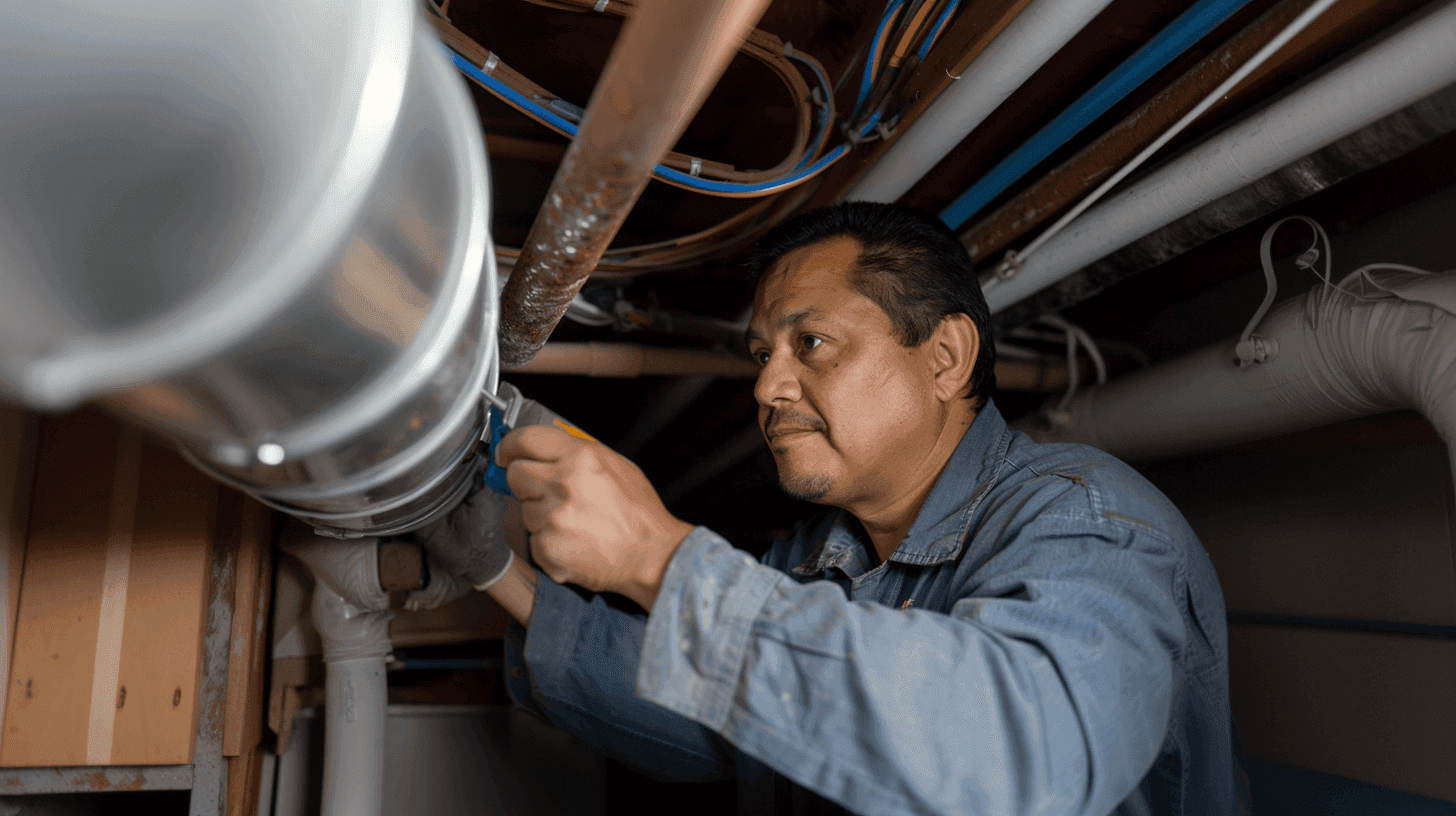Leaky Air Ducts: Identifying and Fixing Common Issues

Air ducts serve as the veins of an HVAC system, transporting conditioned air into your home’s living areas to maintain comfort and efficiency. Often concealed behind walls, ceilings, and in attics, ductwork can develop leaks over time, leading to inefficiencies, uneven heating and cooling, and higher energy bills.
Leaky air ducts can lose up to 30% of conditioned air, underscoring the need for regular duct inspections, repairs, and, if necessary, duct replacement as a long-term solution for severely damaged, aging, or leaky air ducts.
Common Causes of Leaking Air Ducts
Like all HVAC equipment, ductwork can develop issues, primarily from poor installation and general wear and tear. Aging or corroded air ducts can cause holes, cracks, or separations to form. Physical damage from pests and rodents can also compromise the integrity of the ductwork, leading to potential leaks.
Signs of Leaky Air Ducts
Uncovering leaky ducts early on is the key to maintaining a comfortable and efficient indoor environment. Some of the most common signs of leaky air ducts include:
- Higher energy bills without any corresponding weather event or increase in system usage.
- Hot or cold spots around your home.
- Rooms that are difficult to keep comfortable
- Dust buildup around registers or vents.
- Hissing or whistling noise coming from the ductwork, indicating air is escaping.
- Visible damage to the ductwork or disconnection in duct joints.
DIY Ductwork Inspection and Repair
If you haven’t noticed any signs of potential air duct leaks, it’s still worthwhile to conduct periodic inspections if you have access to the ductwork in crawlspaces, attics, or basements.
Start by visually inspecting the accessible ductwork for signs of damage such as tears, holes, or disconnected joints. To pinpoint the exact location of a potential leak, use an incense stick or smoke pencil. If the smoke is drawn into the duct, it indicates a leak.
For minor leaks that are not widespread throughout the duct system, most homeowners can perform repairs themselves. Use metal tape or mastic sealer to seal affected areas, and consider insulating ducts in unconditioned spaces to prevent energy loss and reduce the risk of condensation buildup.
When to Seek Professional Help for Air Duct Leaks
In most cases, it’s best to seek the help of a qualified HVAC technician or indoor air quality specialist to assess the condition of your air ducts, especially if you believe it’s a larger, more complex issue. Consider contacting a professional if:
- The ductwork is old, damaged, or properly installed.
- You find multiple leaks throughout the system.
- You are unable to access the ductwork.
- The efficiency of your HVAC system as well as your indoor comfort are noticeably compromised.
Professionals will perform a thorough inspection of your entire duct system to find any leaks or compromised areas. They will then seal or repair the duct leaks using the appropriate materials which can include mastic tape, metal tape, and duct insulation to effectively seal all leaks. If necessary, they can use specialized equipment such as infrared cameras or duct pressure testing equipment to find hidden duct leaks.
Duct Lifespan and Replacement Considerations
The age, type, and condition of the ductwork all play important factors in determining whether ductwork repair or replacement is warranted. HVAC ductwork generally lasts about 10 to 25 years based on factors such as its age, condition, duct type, and installation quality.
If the ductwork is more than 15 years old and has extensive damage, it may be time to consider duct replacement. Although a substantial financial commitment, your aging ducts will eventually need to be replaced, and doing so now will eliminate air loss, reduce your monthly energy bills, and create a more comfortable and healthier indoor environment.